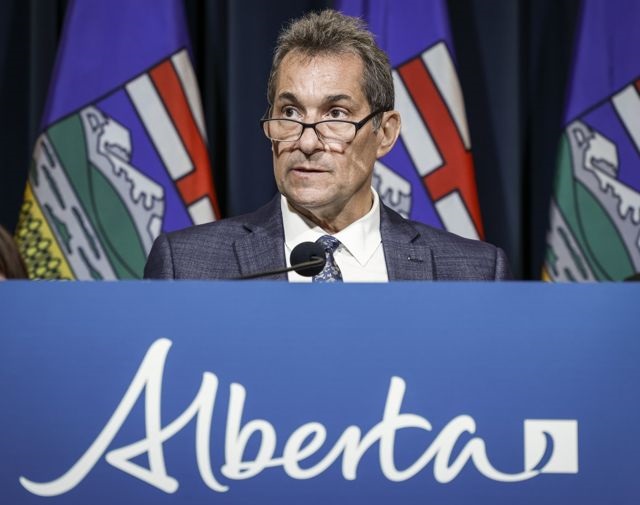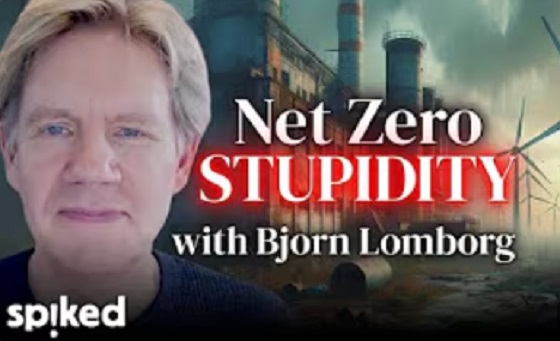Alberta
E-coli shows up at more daycares in Calgary – Alberta Chief Medical Officer of Health

Statement from Chief Medical Officer of Health
Dr. Mark Joffe, Chief Medical Officer of Health, issued the following statement on the E. Coli situation in Calgary:
“It has come to my attention that five additional daycare sites have had children attend who have tested positive for E. Coli. Some of these children are connected to daycares from the original outbreak. These additional facilities will be closed, out of an abundance of caution. Facilities will be required to be cleaned and sanitized and all children will be tested to confirm their negative status before returning to the centre. All facility operators have been contacted, and parents of these facilities will be directly notified as soon as possible by the operators working with Alberta Health Services.
“The six additional sites are:
- Active Start Country Hills
- CanCare Childcare – Scenic Acres location
- CEFA Early Learning Childcare North
- MTC Daycare
- Renert Junior Kindergarten
- Calgary JCC Child Care
“Additionally, Vik Academy is again closed for precaution pending testing results. This facility was part of the original closures.
“To all the parents involved in this terrible situation – we hear you and understand what you are going through. However, it is crucial for parents who have children who attend these daycares follow the guidance being given to them by health care professionals. If your daycare is closed, please respect why this is done and keep your children at home. Only send your child to another facility if they have tested negative for E. Coli and have no symptoms.
“To all daycare operators in the Calgary region – please confirm the health and daycare history of children who are new to your facility.
“By working together and following health guidance, we will stop this outbreak.
“Parents and staff from all impacted daycares involved are being provided with information about what to do if they or their children experience symptoms, test positive, or have concerns about the health and safety of their child. If your child is experiencing more severe symptoms, such as bloody diarrhea, they should be taken to an emergency department immediately.
“E. Coli is a highly transmissible bacteria that can be spread by food or water sources, or by hand to mouth contact. Some secondary transmission is common and expected in significant outbreaks such as this.”
The original 11 sites that were closed are:
- Fueling Brains Braeside
- Fueling Brains West 85th
- Fueling Brains New Brighton
- Fueling Brains Centennial
- Fueling Brains McKnight
- Kidz Space
- Vik Academy in Okotoks
- Fueling Brains Bridgeland
- Little Oak Early Education (formerly Mangrove)
- Almond Branch School
- Braineer Academy
Alberta
Alberta takes big step towards shorter wait times and higher quality health care

From the Fraser Institute
On Monday, the Smith government announced that beginning next year it will change the way it funds surgeries in Alberta. This is a big step towards unlocking the ability of Alberta’s health-care system to provide more, better and faster services for the same or possibly fewer dollars.
To understand the significance of this change, you must understand the consequences of the current (and outdated) approach.
Currently, the Alberta government pays a lump sum of money to hospitals each year. Consequently, hospitals perceive patients as a drain on their budgets. From the hospital’s perspective, there’s little financial incentive to serve more patients, operate more efficiently and provide superior quality services.
Consider what would happen if your local grocery store received a giant bag of money each year to feed people. The number of items would quickly decline to whatever was most convenient for the store to provide. (Have a favourite cereal? Too bad.) Store hours would become less convenient for customers, alongside a general decline in overall service. This type of grocery store, like an Alberta hospital, is actually financially better off (that is, it saves money) if you go elsewhere.
The Smith government plans to flip this entire system on its head, to the benefit of patients and taxpayers. Instead of handing out bags of money each year to providers, the new system—known as “activity-based funding”—will pay health-care providers for each patient they treat, based on the patient’s particular condition and important factors that may add complexity or cost to their care.
This turns patients from a drain on budgets into a source of additional revenue. The result, as has been demonstrated in other universal health-care systems worldwide, is more services delivered using existing health-care infrastructure, lower wait times, improved quality of care, improved access to medical technologies, and less waste.
In other words, Albertans will receive far better value from their health-care system, which is currently among the most expensive in the world. And relief can’t come soon enough—for example, last year in Alberta the median wait time for orthopedic surgeries including hip and knee replacements was 66.8 weeks.
The naysayers argue this approach will undermine the province’s universal system and hurt patients. But by allowing a spectrum of providers to compete for the delivery of quality care, Alberta will follow the lead of other more successful universal health-care systems in countries such as Australia, Germany, the Netherlands and Switzerland and create greater accountability for hospitals and other health-care providers. Taxpayers will get a much better picture of what they’re paying for and how much they pay.
Again, Alberta is not exploring an untested policy. Almost every other developed country with universal health care uses some form of “activity-based funding” for hospital and surgical care. And remember, we already spend more on health care than our counterparts in nearly all of these countries yet endure longer wait times and poorer access to services generally, in part because of how we pay for surgical care.
While the devil is always in the details, and while it’s still possible for the Alberta government to get this wrong, Monday’s announcement is a big step in the right direction. A funding model that puts patients first will get Albertans more of the high-quality health care they already pay for in a timelier fashion. And provide to other provinces an example of bold health-care reform.
Alberta
Alberta’s embrace of activity-based funding is great news for patients

 From the Montreal Economic Institute
From the Montreal Economic Institute
Alberta’s move to fund acute care services through activity-based funding follows best practices internationally, points out an MEI researcher following an announcement made by Premier Danielle Smith earlier today.
“For too long, the way hospitals were funded in Alberta incentivized treating fewer patients, contributing to our long wait times,” explains Krystle Wittevrongel, director of research at the MEI. “International experience has shown that, with the proper funding models in place, health systems become more efficient to the benefit of patients.”
Currently, Alberta’s hospitals are financed under a system called “global budgeting.” This involves allocating a pre-set amount of funding to pay for a specific number of services based on previous years’ budgets.
Under the government’s newly proposed funding system, hospitals receive a fixed payment for each treatment delivered.
An Economic Note published by the MEI last year showed that Quebec’s gradual adoption of activity-based funding led to higher productivity and lower costs in the province’s health system.
Notably, the province observed that the per-procedure cost of MRIs fell by four per cent as the number of procedures performed increased by 22 per cent.
In the radiology and oncology sector, it observed productivity increases of 26 per cent while procedure costs decreased by seven per cent.
“Being able to perform more surgeries, at lower costs, and within shorter timelines is exactly what Alberta’s patients need, and Premier Smith understands that,” continued Mrs. Wittevrongel. “Today’s announcement is a good first step, and we look forward to seeing a successful roll-out once appropriate funding levels per procedure are set.”
The governments expects to roll-out this new funding model for select procedures starting in 2026.
* * *
The MEI is an independent public policy think tank with offices in Montreal, Ottawa, and Calgary. Through its publications, media appearances, and advisory services to policymakers, the MEI stimulates public policy debate and reforms based on sound economics and entrepreneurship.
-

 2025 Federal Election1 day ago
2025 Federal Election1 day agoResearchers Link China’s Intelligence and Elite Influence Arms to B.C. Government, Liberal Party, and Trudeau-Appointed Senator
-

 2025 Federal Election1 day ago
2025 Federal Election1 day agoRCMP memo warns of Chinese interference on Canadian university campuses to affect election
-

 Justice2 days ago
Justice2 days agoCanadian government sued for forcing women to share spaces with ‘transgender’ male prisoners
-

 Alberta2 days ago
Alberta2 days agoAlberta takes big step towards shorter wait times and higher quality health care
-

 Energy2 days ago
Energy2 days agoTrump signs four executive orders promoting coal industry
-

 COVID-1924 hours ago
COVID-1924 hours agoFauci, top COVID officials have criminal referral requests filed against them in 7 states
-

 Bjorn Lomborg1 day ago
Bjorn Lomborg1 day agoThe stupidity of Net Zero | Bjorn Lomborg on how climate alarmism leads to economic crisis
-

 Business2 days ago
Business2 days agoTrump raises China tariffs to 125%, announces 90-day pause for countries who’ve reached out to negotiate










